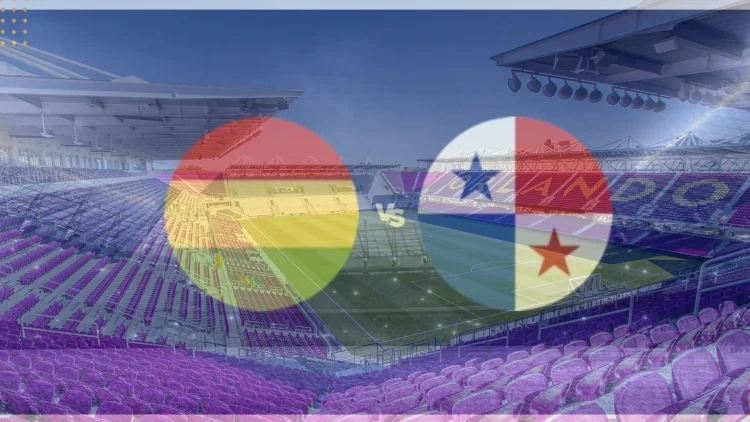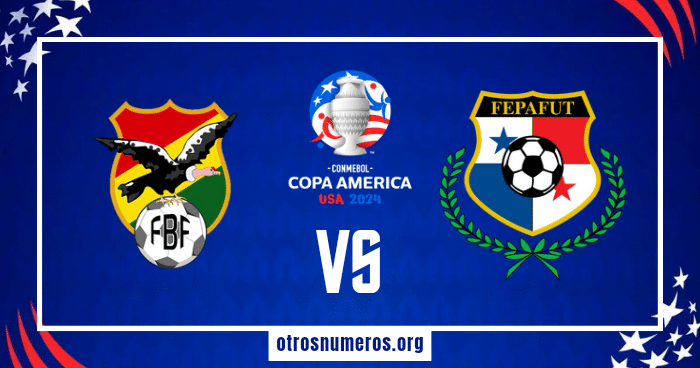Historical and Political Context

Bolivia vs panama –
Bolivia and Panama have a long and complex historical relationship, dating back to the colonial era. Both countries were part of the Spanish Empire, and they gained independence from Spain in the early 19th century. Bolivia became a republic in 1825, while Panama became a province of Colombia. In 1903, Panama seceded from Colombia and became an independent republic.
Bolivia y Panamá se enfrentaron en un emocionante partido que mantuvo a los aficionados al borde de sus asientos. El ambiente era eléctrico, y ambos equipos lucharon duro por la victoria. Mientras que el juego de Bolivia vs Panamá cautivó a los fanáticos, otro enfrentamiento igualmente emocionante tuvo lugar en el Caribe: el juego de Venezuela y Jamaica.
Este partido también estuvo lleno de acción y drama, y los aficionados disfrutaron de un espectáculo de fútbol de primer nivel. Al final, Bolivia y Panamá empataron, mientras que Venezuela salió victoriosa sobre Jamaica.
In the years since independence, Bolivia and Panama have maintained close diplomatic relations. The two countries have signed a number of agreements on trade, investment, and cultural cooperation. In recent years, Bolivia and Panama have worked together to promote regional integration and cooperation.
Bolivia and Panama’s contrasting cultures are a fascinating study in diversity. Yet, both nations share a common thread: the allure of the Caribbean. Puerto Rico, a vibrant island steeped in Spanish colonial history, has captivated the imaginations of Bolivians and Panamanians alike.
Its enchanting beaches, lively music, and delectable cuisine offer a tantalizing escape from the Andean highlands and Central American jungles. As the sun sets over the Caribbean Sea, casting a golden glow on the palm trees, one can’t help but wonder if the rivalry between Bolivia and Panama might be softened by the shared dream of a tropical paradise.
Current Political Dynamics
The current political dynamics between Bolivia and Panama are characterized by cooperation and mutual respect. The two countries share a commitment to democracy and human rights. They also share a common interest in promoting economic development and social justice in the region.
Bolivia and Panama are both members of the Organization of American States (OAS) and the United Nations (UN). They also participate in a number of regional organizations, such as the Andean Community of Nations (CAN) and the Central American Integration System (SICA).
Economic Comparison: Bolivia Vs Panama

Bolivia and Panama have distinct economic profiles, strengths, and challenges. Let’s delve into their economic landscapes and compare key indicators side-by-side.
GDP and Inflation
- Bolivia’s GDP in 2022 was approximately $44.5 billion, with an inflation rate of 3.6%.
- Panama’s GDP in 2022 was significantly higher at $82.9 billion, with an inflation rate of 4.1%.
Major Industries, Bolivia vs panama
- Bolivia’s economy is largely driven by mining (particularly tin, silver, and lithium), natural gas, and agriculture (e.g., soybeans, quinoa).
- Panama’s economy relies heavily on the services sector, including tourism, financial services, and the Panama Canal.
Economic Strengths and Weaknesses
Bolivia’s economic strengths include its abundant natural resources and potential for economic diversification. However, it faces challenges such as poverty, income inequality, and limited infrastructure.
Panama’s economic strengths include its strategic location, developed infrastructure, and a stable financial system. However, it faces challenges related to income inequality, corruption, and environmental concerns.
Cultural Exchange and Tourism

Bolivia and Panama share a rich cultural heritage, reflecting their diverse populations and geographic locations. While both countries boast vibrant indigenous traditions, Spanish colonial influences, and modern cosmopolitanism, unique cultural nuances set them apart.
Cultural Similarities
- Both Bolivia and Panama are predominantly Spanish-speaking nations, with indigenous languages also spoken by significant portions of the population.
- The countries share a history of Spanish colonialism, which has left a lasting impact on their architecture, religion, and customs.
- Both countries are home to diverse indigenous cultures, with Bolivia having 36 recognized indigenous groups and Panama having seven.
Cultural Differences
- Bolivia is a landlocked country, while Panama is a narrow isthmus connecting North and South America. This geographic difference has shaped their respective cultures and economies.
- Bolivia has a strong Andean indigenous influence, evident in its traditional music, textiles, and festivals. Panama, on the other hand, has a more Caribbean flavor, with influences from Afro-Caribbean and mestizo cultures.
- Bolivia is known for its traditional textiles and handicrafts, while Panama is famous for its hats and coffee.
Tourism
Tourism plays a significant role in both Bolivia and Panama. Bolivia attracts visitors with its stunning natural landscapes, including the Andes Mountains, the Amazon rainforest, and the Salar de Uyuni. Panama is known for its vibrant cities, the Panama Canal, and its beautiful beaches.
Tourist Attractions
Bolivia
- Salar de Uyuni: The world’s largest salt flat, offering surreal landscapes and unique photo opportunities.
- Lake Titicaca: The highest navigable lake in the world, home to floating islands and ancient Inca ruins.
- Tiwanaku: An ancient pre-Incan city with impressive ruins and a rich cultural heritage.
Panama
- Panama Canal: One of the most important engineering feats in history, connecting the Atlantic and Pacific Oceans.
- Casco Viejo: The historic old town of Panama City, a UNESCO World Heritage Site with charming colonial architecture.
- San Blas Islands: A group of pristine islands off the Caribbean coast, offering stunning beaches and opportunities for snorkeling and diving.